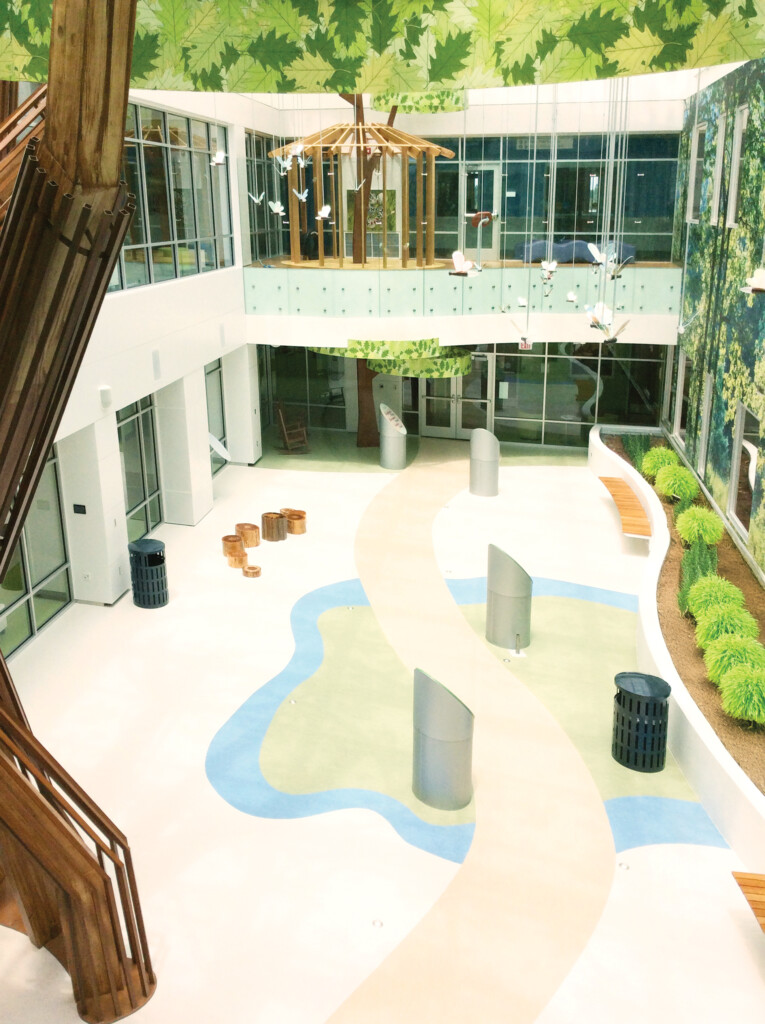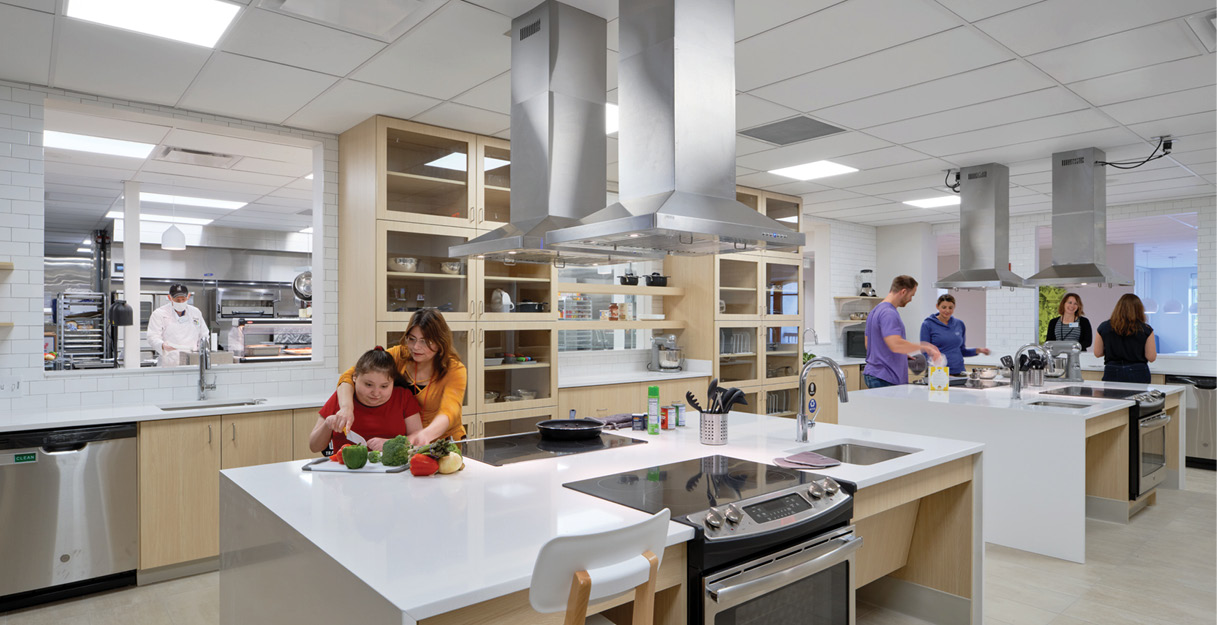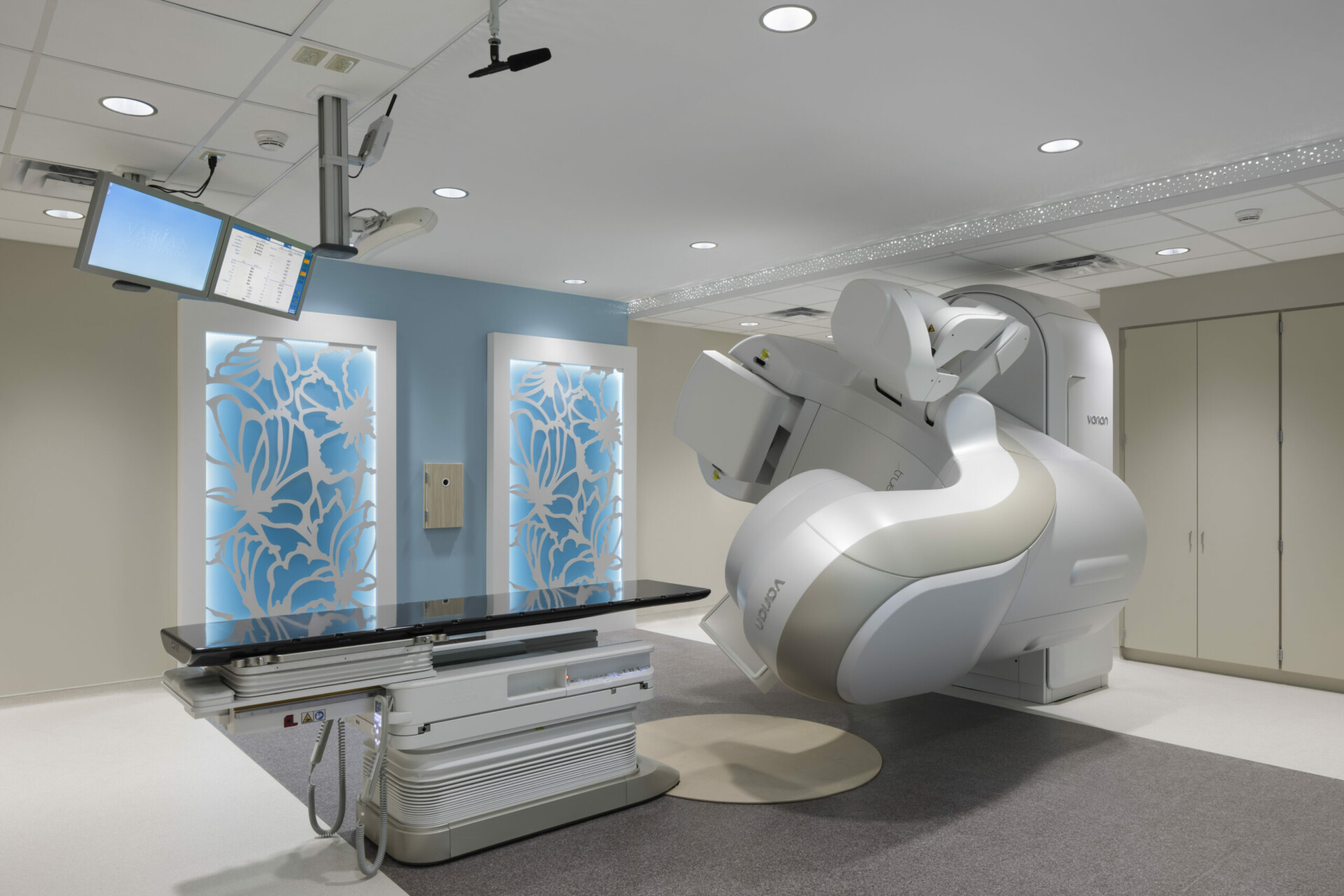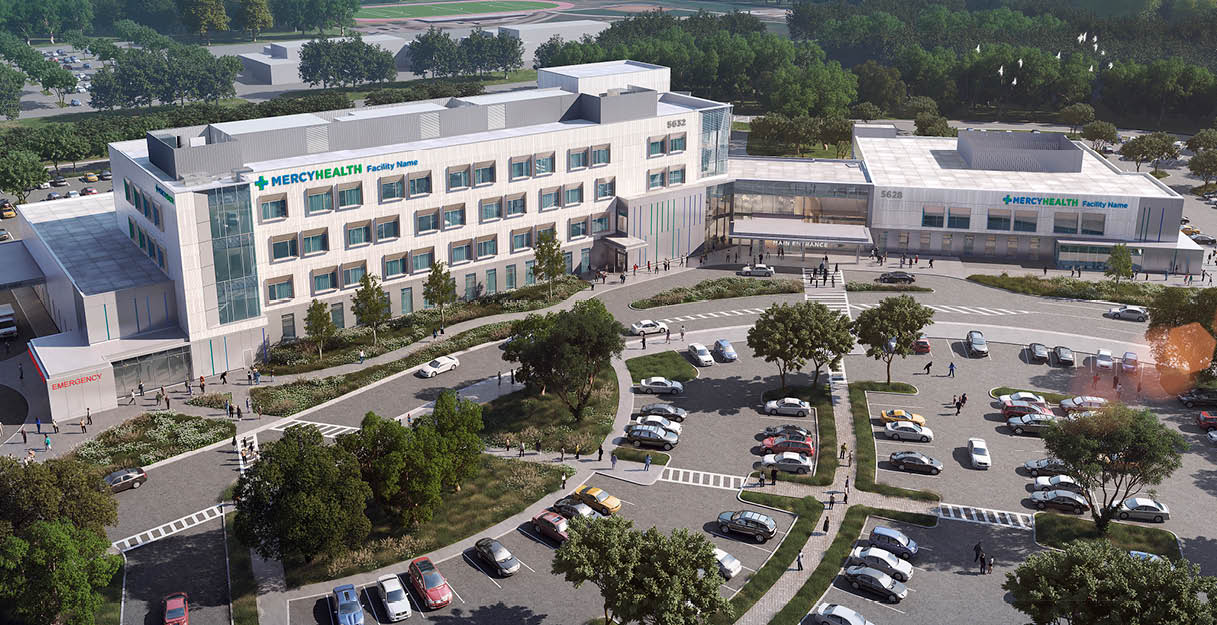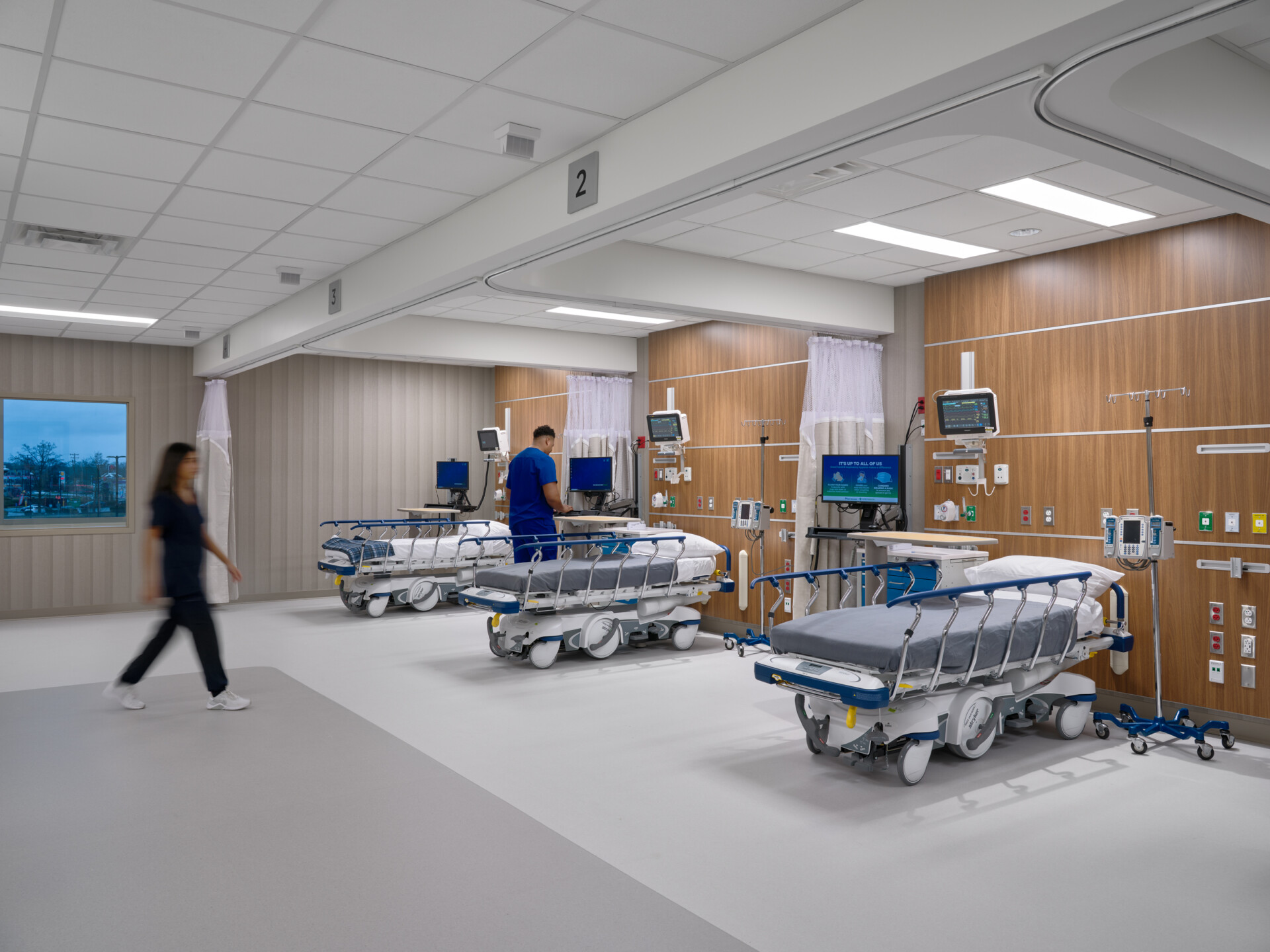When it comes to pediatric healthcare facilities, mechanical, electrical, and plumbing (MEP) systems for must be tailored to meet the specific needs of children, ensuring their safety, engagement, and comfort.
As part of our celebration of ASHE’s Health Care Facilities and Engineering week, read on to learn more about best practices for building infrastructure and MEP design inside these unique healthcare spaces.
1. Create a Child-Friendly Environment
A primary goal in designing pediatric healthcare facilities is to create an environment that engages children and distracts them from the often stressful and intimidating experience of being in a hospital. For example, Beacon Children’s Hospital has playful seating and natural light filtering through glass ceilings. Some areas even resemble a forest, leveraging biophilic design to improve mood and promote healing.
Another technique allows children to control their environment, such as lighting and temperature. This provides a sense of normalcy and distraction. For example, technology can enable young patients to change the color of their room lights. This control creates a positive distraction. It enhances the environment inside and outside the building.
Imagine rows of patient rooms with different colors shining at night or walking down a hallway with colorful lights. This child-friendly environment must be thoughtfully and intentionally integrated throughout the facility from concept to execution.
At Cincinnati Children’s Hospital Medical Center, interactive lighting and technology create engaging spaces that feel more like a playground than a hospital. These features help reduce anxiety and make the hospital experience more positive for young patients. Inside the new Critical Care Building, our team provided commissioning for groundbreaking spectral lighting, which was developed by Cincinnati Children’s researchers to support healthy sleep cycles and growth in newborns. Designed to mimic day-night circadian cycles, this state-of-the-art lighting system helps support development in extremely premature infants.
2. Consider Different Age Groups
The interests of a 5-year-old and a 13-year-old are not the same! Designing for pediatric healthcare facilities involves understanding the needs of a wide range of ages, from infants to teenagers. The design team must ensure that spaces are appropriately scaled and equipped, while also accounting for the varying needs of their families and friends during treatment.
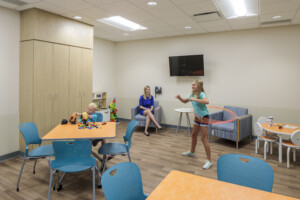 At Dayton Children’s Hospital, the design incorporates different levels and spaces for various age groups. Infant care areas feature indirect lighting and carefully controlled HVAC systems to avoid direct airflow on infants, while spaces for older children include interactive elements and more open, engaging environments.
At Dayton Children’s Hospital, the design incorporates different levels and spaces for various age groups. Infant care areas feature indirect lighting and carefully controlled HVAC systems to avoid direct airflow on infants, while spaces for older children include interactive elements and more open, engaging environments.
Beacon Children’s Hospital emphasizes the importance of family involvement, creating rooms spacious enough to accommodate family members and providing flexible areas where parents can work remotely with amenities like Wi-Fi and localized lighting.
Noise is another critical consideration, as it can disrupt children’s essential sleep. Sleep is vital for young patients to support learning, memory formation, emotional regulation, and healthy development. Addressing noise involves collaboration on building elements to minimize HVAC and equipment-related noise. Sound masking systems may also be needed to create a quieter, more restful environment.
3. Ensure Safety and Security
 Safety is paramount in pediatric healthcare facility design, involving both physical safety and promoting health and well-being. For example, advanced air filtration systems and UV lighting can maintain a sterile environment, crucial for patients with compromised immune systems.
Safety is paramount in pediatric healthcare facility design, involving both physical safety and promoting health and well-being. For example, advanced air filtration systems and UV lighting can maintain a sterile environment, crucial for patients with compromised immune systems.
Durability is another key consideration to improve the longevity of infrastructure inside pediatric healthcare spaces. Power outlets, plumbing fixtures, and HVAC equipment should be tamper-resistant and strategically placed to prevent problems.
In addition, advanced security technology such as infant protection, access control, and video monitoring systems can also help protect the safety of young patients. These technology systems must be carefully planned to work hand-in-hand with existing systems or software. Collaboration early on can help seamlessly integrate equipment so that it does not interfere with the interior design. The goal is to make technology both functional and unobtrusive.
Dayton Children’s new behavioral health pavilion exemplifies the importance of balancing the need for safety and security, while still creating a healing, calming atmosphere. The facility provides a welcoming, secure, and enriching atmosphere that supports both mental health treatment and patient well-being. By incorporating features such as daylight access and outdoor therapeutic spaces, the design avoids an institutional feel. The use of anti-ligature and tamper-resistant fixtures, as well as the thoughtful integration of security systems, ensures safety and security throughout while still prioritizing a patient-centered design.
4. Streamlined Integrate Technology
 Technology plays a crucial role in enhancing patient care and engagement, including audio-visual equipment, wired and wireless networks, and cutting-edge augmented and virtual reality systems. However, the integration of technology must be carefully planned to ensure it complements the interior design and aesthetic, rather than detracting from it. Seamless technology integration involves embedding interactive and supportive technologies into the environment.
Technology plays a crucial role in enhancing patient care and engagement, including audio-visual equipment, wired and wireless networks, and cutting-edge augmented and virtual reality systems. However, the integration of technology must be carefully planned to ensure it complements the interior design and aesthetic, rather than detracting from it. Seamless technology integration involves embedding interactive and supportive technologies into the environment.
Interactive lighting and technology can be used to create engaging spaces that feel more like a playground than a hospital. These technologies are integrated into the design elements, allowing children to interact with their environment in meaningful ways. Touch-screen walls, virtual reality stations, and interactive displays are designed to blend seamlessly with the overall aesthetic, providing a cohesive and engaging experience for young patients. New 3D and virtual reality software can also be leveraged to create a playful, engaging experience for young patients to help with exercise and physical therapy.
Incorporating technology into the patient rooms, such as tablets or control panels for lighting and temperature, gives children a sense of control over their environment. These systems are designed to be intuitive and child-friendly, ensuring ease of use while maintaining a sleek and unobtrusive appearance.
Advanced medical technologies, such as telemedicine capabilities and real-time patient monitoring systems, are also integrated into the facility’s design. These technologies enable remote consultations and continuous monitoring without overwhelming the patient or family with visible equipment. With thoughtful technology planning and design, pediatric healthcare facilities can enhance the patient’s experience, improve care delivery, and maintain a welcoming and aesthetically pleasing environment.
5. “Bring the Outside In” with Biophilic Design
Biophilic design in pediatric healthcare facilities involves bringing elements of nature indoors to create a calming and healing environment for young patients. It includes features such as indoor gardens, green walls, natural materials, and ample natural light. Incorporating these elements presents unique challenges for MEP systems, which must support and maintain these green spaces.
Indoor gardens and green walls require specialized irrigation and drainage systems to ensure plants thrive without causing water damage to the building. HVAC systems must be designed to provide adequate ventilation and humidity control to maintain a healthy environment for plants and patients. 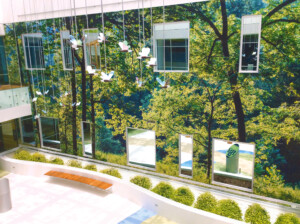
At Beacon Children’s Hospital, collaboration between engineers and architects ensured that air distribution systems were seamlessly integrated into the design. The systems are hidden within natural elements like mushroom structures, to enhance the biophilic experience without compromising functionality.
Advanced lighting systems can also be installed to support plant growth and provide a more natural and comfortable environment. These lighting systems, combined with efficient energy management, ensure that the biophilic elements are sustainable and cost-effective.
Benefits of Our Tailored Approach
Our team collaborates with healthcare facilities engineering professionals and architects to create engaging, appropriately scaled, and safe environments. This approach ensures that MEP infrastructure and equipment meet needs for both form and function, complementing the interior design rather than detracting from it. Together, we are creating spaces that inspire and heal.
Reach out to our team to collaborate on your next pediatric healthcare project.

Daric Hess |

Eric Laudick |

Michael McCollum |

Doug Sales |
